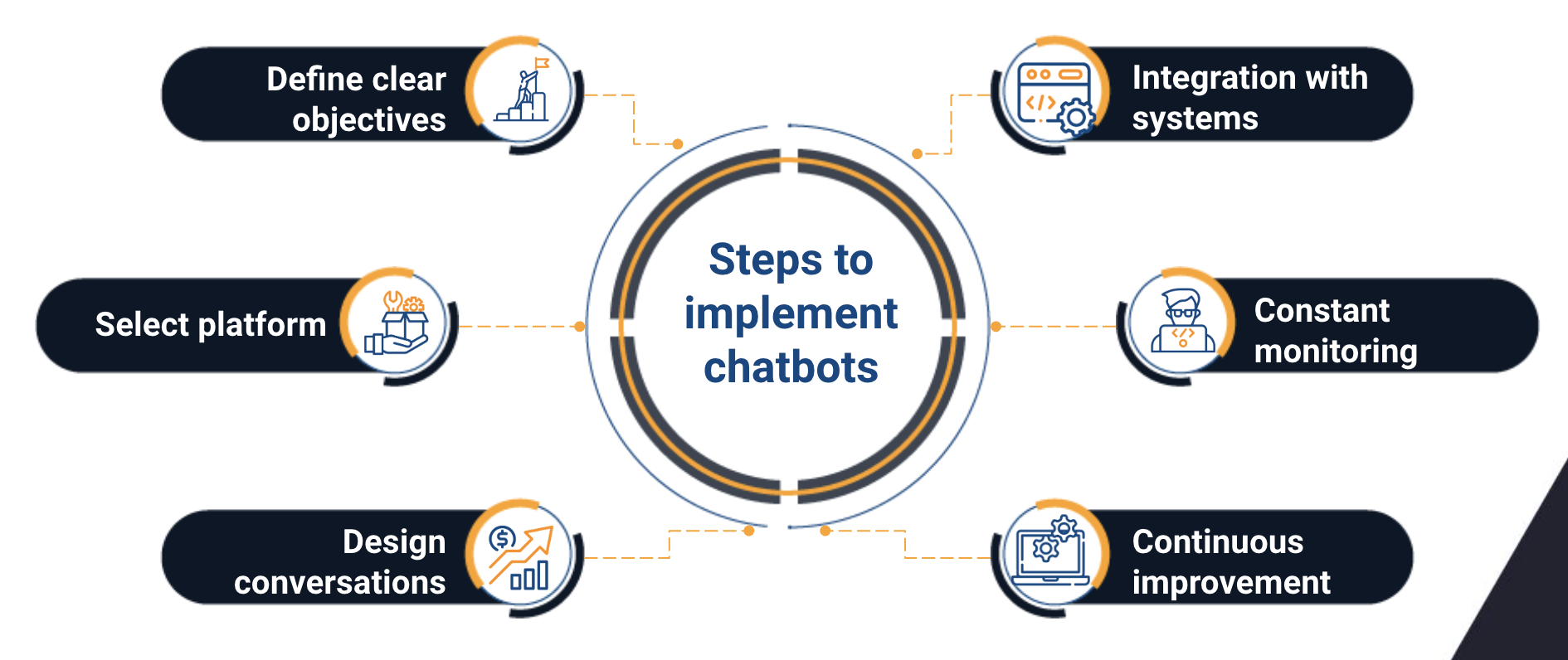
Chatbots have become an essential tool for businesses looking to improve their operations and customer experiences. From small startups to large corporations, chatbots are revolutionizing the way businesses interact with their customers.
We created this blog to look at the benefits of chatbots for business, how to implement them effectively, and we will present some success stories that highlight their positive impact on various industries.

What are Chatbots?
Chatbots are computer programs designed to simulate human conversations. They use artificial intelligence (AI) and natural language processing (NLP) to understand and respond to user queries in an automated manner. These systems can be integrated into websites, messaging apps, and social media platforms to offer immediate and personalized support.
Benefits of Chatbots for Business
1. Improved Customer Service
One of the most notable benefits of chatbots for businesses is their ability to improve customer service. Being available 24/7, chatbots can handle basic queries and resolve common problems quickly and efficiently.
This not only reduces customer wait time, but also frees up employees to focus on more complex, value-added tasks.
2. Increase in Operational Efficiency
Business chatbots can automate repetitive and mundane tasks, helping businesses operate more efficiently. From managing reservations to collecting customer data, chatbots can perform multiple tasks simultaneously without human error, reducing operational costs and improving productivity.
3. Better User Experience
By offering fast and accurate responses, business chatbots improve the user experience by reducing frustration and increasing satisfaction. Additionally, they can personalize interactions based on the customer's purchase history and preferences, creating a more engaging and relevant experience.

4. Generation of Leads and Sales
Not only can chatbots answer questions, but they can also act as proactive sales tools. By interacting with website visitors and guiding them through the sales funnel, business chatbots can convert visitors into leads and, eventually, actual customers.
They can also recommend products and promotions based on user behavior, thus increasing cross-sell and upsell opportunities.
Implementation of Chatbots for Business
Implementing chatbots in a company requires careful planning and strategic execution. Here are some key steps to consider:
1. Define Clear Objectives
Before implementing a chatbot for business, it is crucial to define what specific objectives you want to achieve. Do you want to improve customer service, increase sales, or both? Having clear objectives will help you design a chatbot that meets your specific needs.
2. Select the Appropriate Platform
There are several business chatbot platforms available, from open source options to full enterprise solutions. It is important to choose a platform that aligns with your goals and offers the necessary features to customize the chatbot according to your requirements.
3. Design Natural Conversations
The design of chatbot conversations is crucial to ensure a fluid and natural experience for the user. Use clear, concise language, and ensure the chatbot can understand and respond to a variety of common queries.

4. Integrate with Other Systems
To maximize the potential of your chatbot, make sure it is integrated with other systems and platforms in your business, such as CRM and order management systems. This will allow the chatbot to access up-to-date information and offer more accurate and relevant responses.
5. Monitor and Improve Continuously
Implementing chatbots for business is not a single process. It is essential to monitor your performance and collect user feedback to identify areas for improvement. As technology advances and customer needs change, it is important to continually update and optimize the chatbot.
Chatbot Success Stories in Business
1. Domino's Pizza
Domino's Pizza is a great example of how chatbots can improve customer service and increase sales. The company implemented a chatbot called "Dom" on its social media platforms and mobile apps, allowing customers to quickly place orders using voice or text commands. This not only made the ordering process easier, but also increased the company's online sales.
2.H&M
Fashion brand H&M uses chatbots to offer a personalized shopping experience to its customers. By analyzing online user behavior, H&M's chatbot can recommend products based on each customer's individual preferences. This has significantly improved customer satisfaction and boosted sales.
3. American Express
American Express implemented a chatbot in its mobile app to help users manage their accounts and financial transactions. The chatbot offers instant assistance for queries related to balance, recent transactions, and rewards, improving user experience and driving brand engagement.
4. Sephora
Sephora, a renowned cosmetics store chain, has used chatbots to improve its customers' experience by offering product recommendations and personalized makeup tutorials. Through its chatbot on Facebook Messenger, Sephora has managed to interact with its customers effectively, increasing conversion rates and improving brand loyalty.

Future of Chatbots for Business
As artificial intelligence and natural language processing continue to evolve, business chatbots are expected to become even more sophisticated and capable of performing more complex tasks.
Advances in voice recognition technology and machine learning will allow chatbots to better understand users' emotions and needs, resulting in more human and effective interactions.
Business chatbots represent a significant opportunity to improve customer service, increase operational efficiency, and generate new sales opportunities. By deploying chatbots strategically and continuously monitoring their performance, businesses can make the most of this emerging technology and stay ahead in a highly competitive market.
With success stories in various industries, it is clear that chatbots are here to stay and will transform the way companies interact with their customers in the future.


